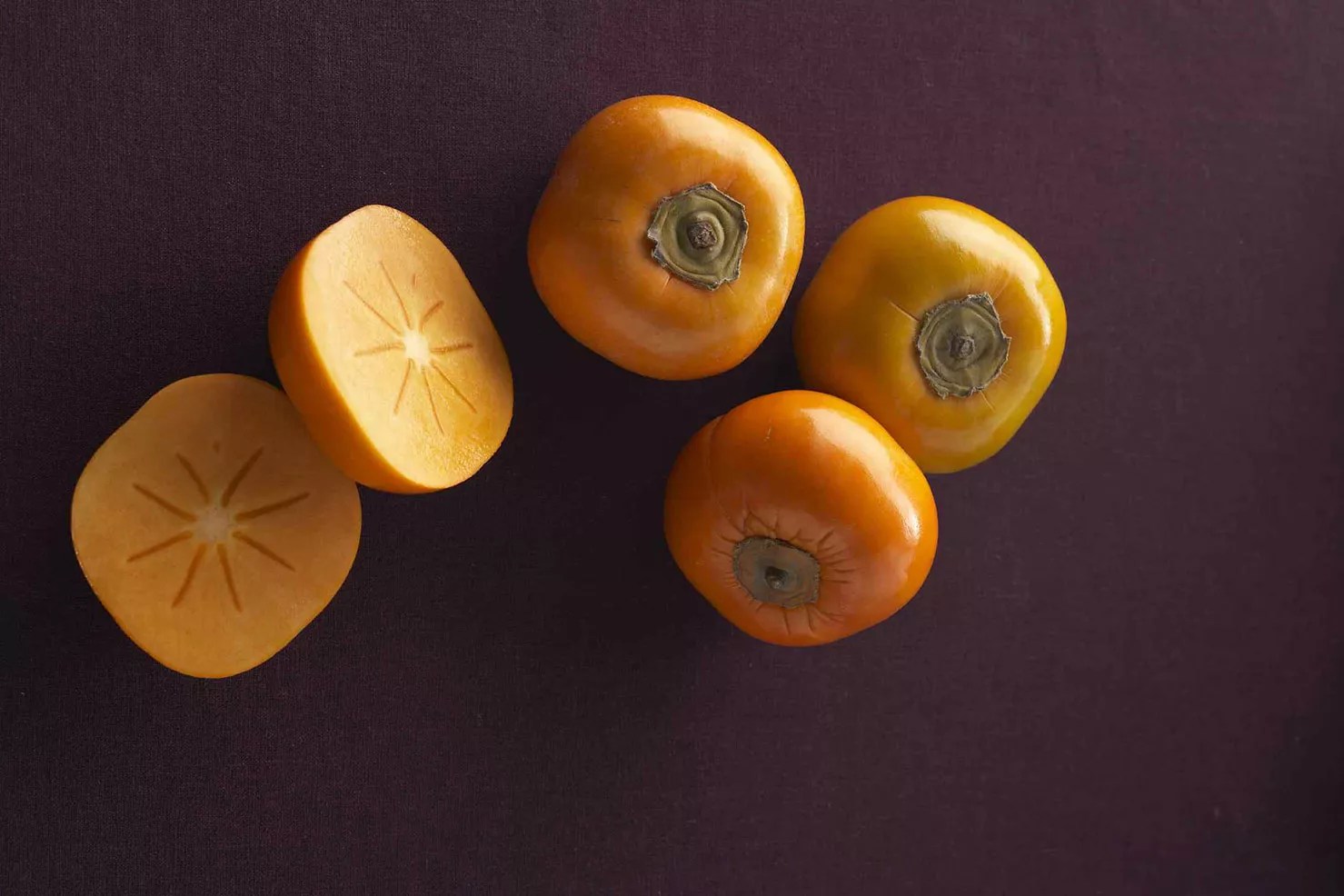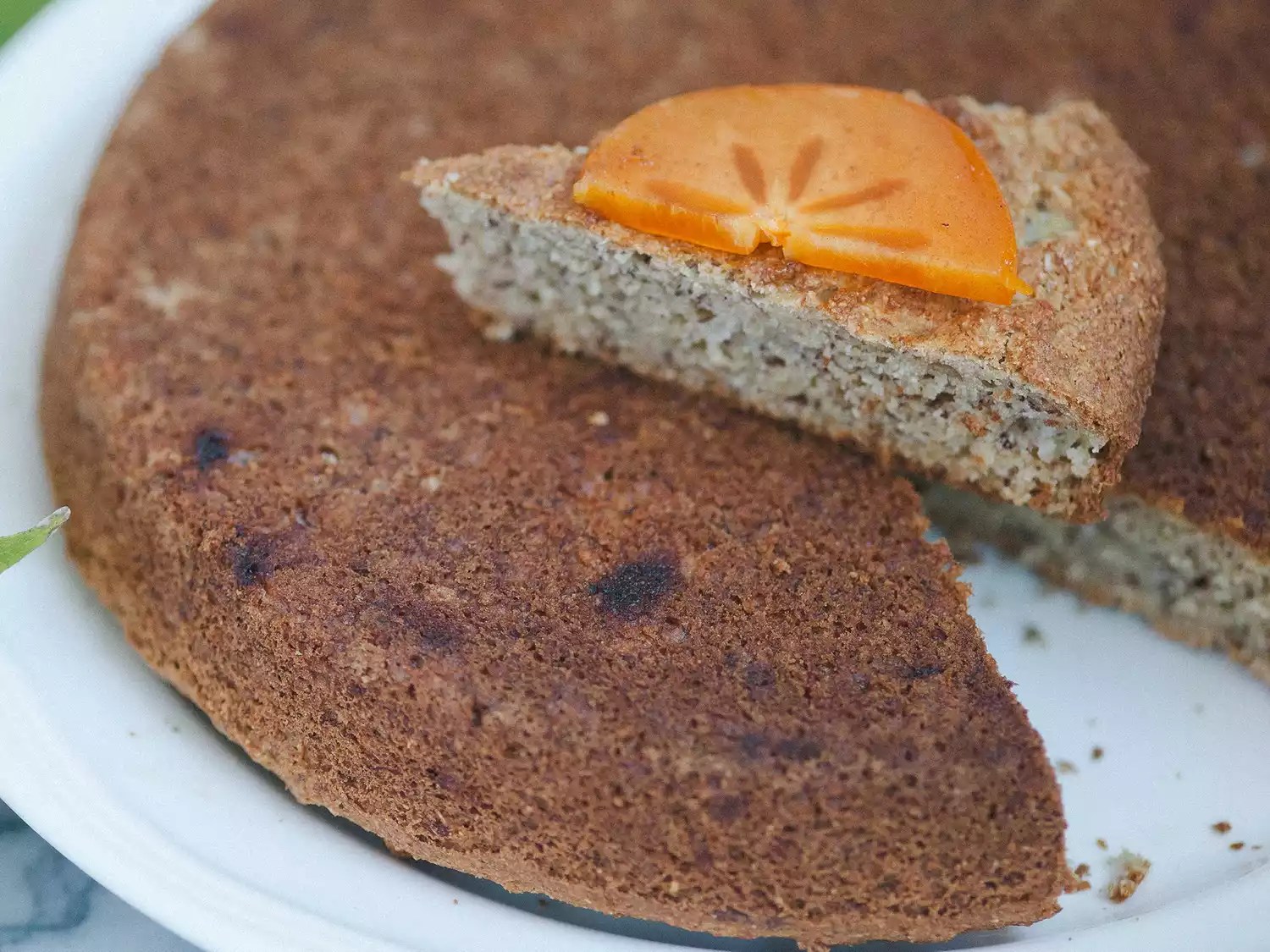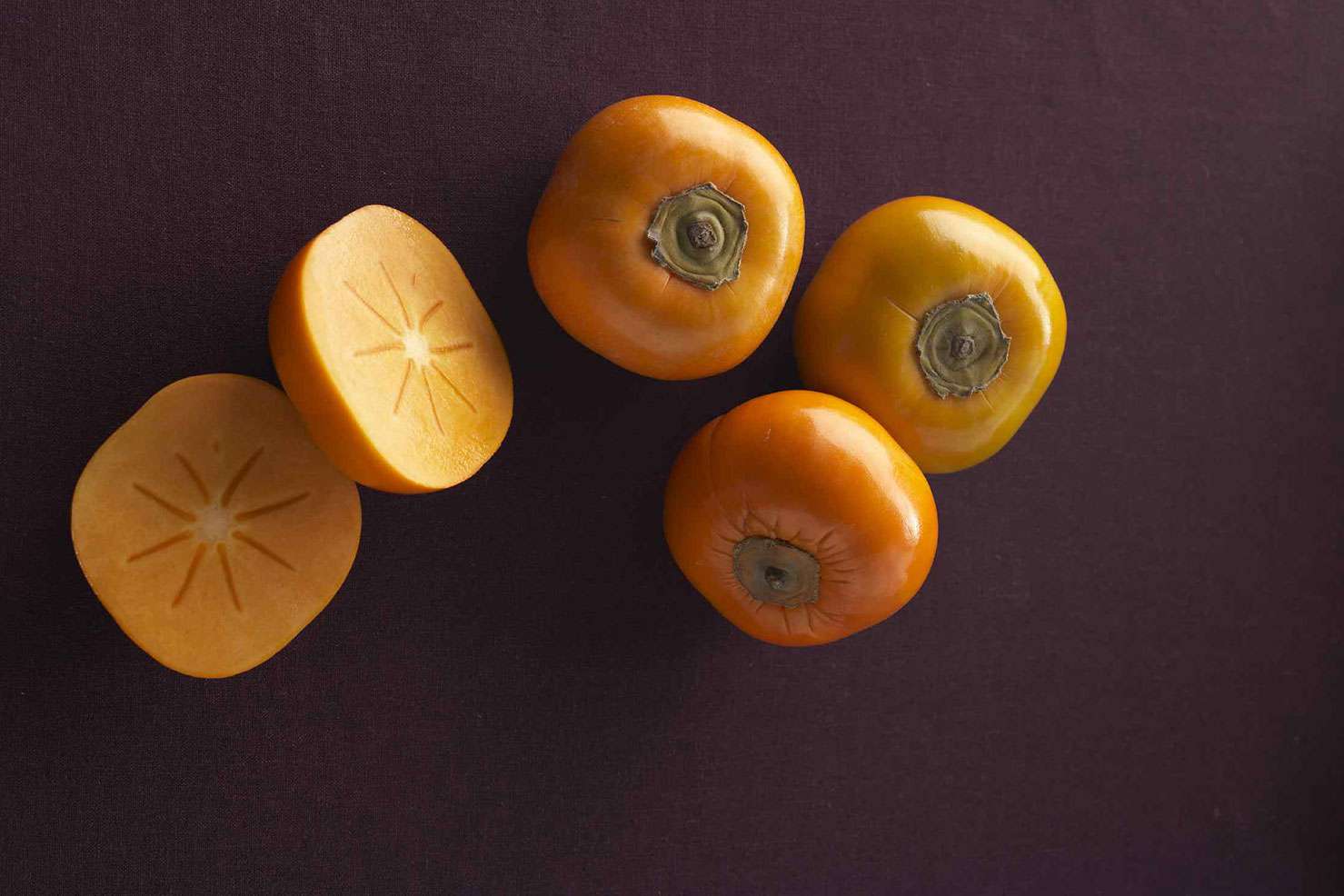What do apples, pears, and persimmons all have in common? They’re all fall fruits! But sadly the humble persimmon just doesn’t get the attention it’s due. If you come across some fabulously ripe persimmons at your local farmers’ market or supermarket, don’t pass up the opportunity to indulge in these sweet treats.
Don’t know where to start? Here you’ll learn all you need to know about persimmons, including how to eat them, cook with them, and store them.

What Is a Persimmon?
Persimmons are a type of fall fruit, typically in season from September through December. When ripe, they have a yellow-orange flesh, a soft jelly-like texture, and a shape akin to that of a tomato. Their exterior can range in color from pale yellow to a deep, red-orange.
These fall fruits are native to China, but they’re also grown in Japan, South Korea, Brazil, Spain, and the U.S. (most commonly in California). When you bite into a ripe persimmon, you’ll first notice its sweet, honey-like flavor, similar to that of an apricot. What you may not expect is that it has up to twice as much fiber as an apple in some cases.
But not all persimmons are created equal. In fact, bite into an unripe, astringent persimmon (as opposed to a sweet persimmon), and you’ll likely recoil at its bitter flavor. Learn the difference between the two most common types of persimmons — Fuyus and Hachiyas — before you head to the market.
How to Eat Persimmons
Now to the real question: How do you eat this alluring fruit? There’s certainly no one way to do it. Whether you’re enjoying them raw or cooked, sweet or savory, persimmons pack a flavorful punch.
How to Eat Raw Persimmons
For a sweet (Fuyu) persimmon, you should use them when they’re still quite firm. Start by rinsing the fruit, removing the leaves, and slicing it like you would an apple into your desired shape. The peel is edible — so take a bite!
If you prefer to wait until your persimmon is more ripe (which you always should when dealing with Hachiyas), simply cut it in half and eat the custard-like flesh with a spoon.
Sweet Persimmon Recipes
Persimmons are a type of fruit, after all, so sweet recipes are really where they shine. Ripe persimmons are great for baking bars, puddings, and even cookies!
Of course, persimmons make great jams and jellies. Use either very ripe Hachiyas or sweet Fuyus to soften into a thick spread, like in this Easy Persimmon Jam recipe.

Savory Persimmon Recipes
Sweet persimmons will add a nice contrast to all your savory dishes. Puree them in soups, slice firm Fuyus up for salads, or use them to top off focaccia flatbread for a sweet and savory appetizer.
Types of Persimmons
In the U.S., there are two types of commercial persimmons widely available: Fuyus and Hachiyas.
- Fuyus, otherwise known as sweet or non-astringent persimmons, are moderately sweet, with a firm flesh. They have a squat, tomato-esque shape with a flat bottom. Unlike their astringent counterparts, Fuyus are okay to eat when they’re still quite firm, like an apple. Use them in sweet and savory dishes, or just enjoy them raw.
- Hachiyas, also known as bitter or astringent persimmons, should not be eaten until fully ripe. Before they’ve reached peak ripeness, Hachiyas will have a virtually inedible, chalky taste. To avoid this unpleasant surprise, make sure you allow Hachiyas to ripen until they’re soft and about to burst. This ensures the tannins will have dissipated, and you’ll have a sweet, smooth persimmon on your hands. To identify a Hachiya persimmon, look for fruit with a long shape that tapers off at the bottom, kind of like an acorn.
Buying Persimmons
You can find persimmons at farmers’ markets and supermarkets beginning in late summer, all the way through December. Hint: Try your local Asian supermarket for the best selection of persimmons.
When choosing persimmons, avoid bruised, ruptured, or lopsided fruit. And keep in mind the type of persimmon you’re dealing with when checking for ripeness. Avoid green persimmons altogether, as these are always astringent.
How to Store Persimmons
Store Fuyus in the fridge to prolong their shelf life, as they should already be ripe the day you bring them home. Here they’ll keep for several weeks.
Hachiyas on the other hand should be kept at room temperature so they can soften (and sweeten) up. To speed up the ripening process, you can always store them near other fruits that give off ethylene gas, such as bananas. Once they’ve reached peaked ripeness, either eat them immediately or transfer them to the fridge and store for up to three weeks.
How to Store Persimmon Puree
Oftentimes baking recipes will call for persimmon puree. This simply refers to ripe persimmon flesh that has been pureed in a food processor or blender. Keep some persimmon puree on hand for all your fall baking projects by transferring it to an airtight container and freezing for up to six months. You can also freeze cubed or slice persimmon flesh by first flash-freezing it on a baking sheet, and then transferring it to an airtight container.
Related:
- Persimmon Recipes That Will Make the Season Sweeter
- Browse our entire collection of Persimmon Recipes.




